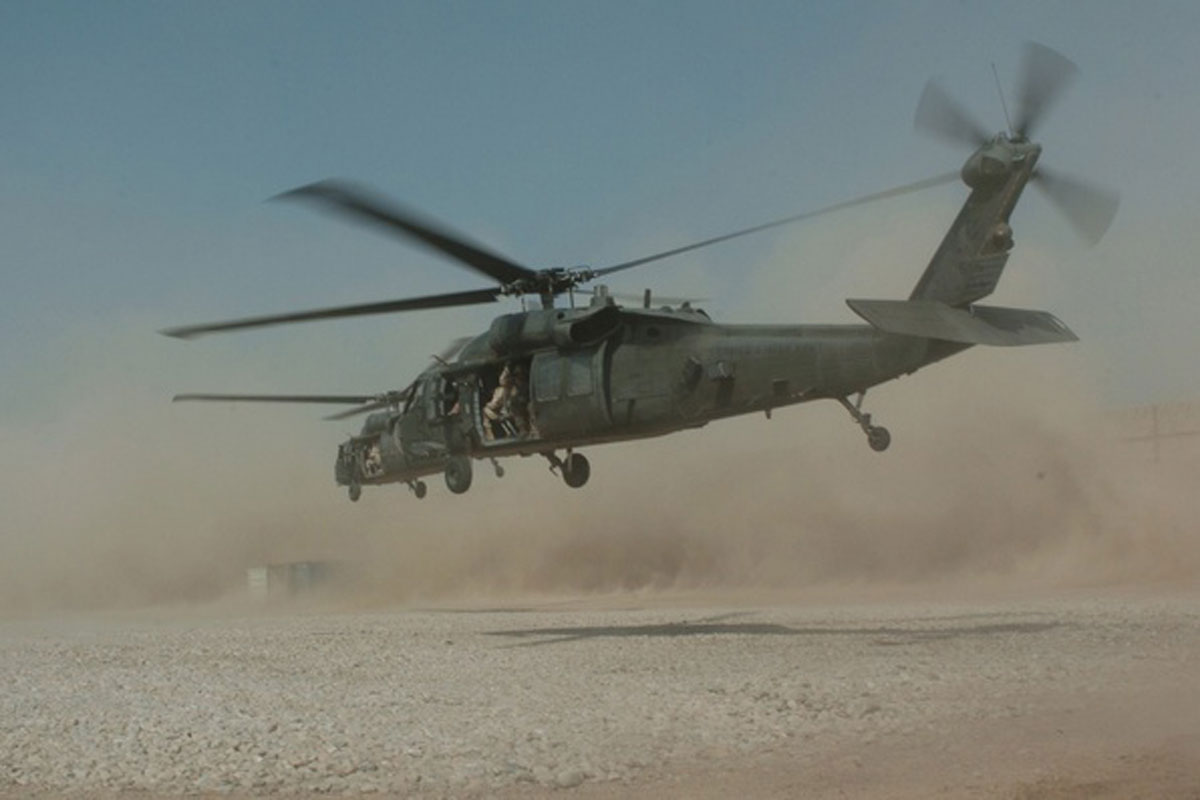UH 60 Helicopter Maintenance: A Comprehensive Guide for Pilots
UH 60 Helicopter Maintenance: A Comprehensive Guide for Pilots
Blog Article
Understanding the Mechanics and Engineering Behind Uh 60 Helicopters
The UH-60 helicopter, generally known as the Black Hawk, stands as a pinnacle of contemporary rotorcraft modern technology, personifying a mix of durable engineering and detailed auto mechanics. As we peel back the layers of the UH-60's design, a globe of intricate systems and meticulous design comes to light.
History of UH-60 Helicopters
The background of UH-60 helicopters traces back to the late 1970s when the USA Military sought a functional and innovative energy helicopter to change its aging fleet. In reaction to this requirement, the Sikorsky Airplane Corporation established the UH-60 Black Hawk helicopter. Introduced in 1979, the UH-60 rapidly became a staple in army procedures because of its excellent capabilities.
The UH-60 was developed to stand out in a variety of goals, consisting of army transport, medical evacuation, digital war, and unique procedures. Its capability to adapt to different duties made it a useful possession to the U.S. uh 60. Military and other military forces around the globe
For many years, the UH-60 system has actually undertaken numerous upgrades and variations to improve its performance and maintain speed with developing goal demands. These helicopters have seen extensive solution in disputes such as the Gulf Battle, Afghanistan, and Iraq, showcasing their dependability and adaptability in diverse functional atmospheres. The UH-60's abundant history is a testament to its enduring heritage as a leading energy helicopter.

Engine and Power Systems
Utilizing sophisticated propulsion technology, UH-60 helicopters are geared up with advanced engine and power systems to make certain optimum performance and reliability in a series of functional situations. The UH-60, typically called the Black Hawk, is powered by two General Electric T700-GE-701D engines, each with the ability of delivering up to 1,940 shaft horse power. These turboshaft engines give the necessary drive for the helicopter to execute its goals successfully, including troop transport, medical evacuation, and fight support.

Rotor System and Aerodynamics
Exactly how do the rotor system and the rules of aerodynamics of UH-60 helicopters add to their functional efficiency and trip capacities? The rotor system of the UH-60 helicopter plays a critical duty in offering lift and propulsion.
Aerodynamics additionally play an essential role in the performance of UH-60 helicopters. The structured fuselage and rotor blade design decrease drag, permitting the helicopter to achieve greater rates and far better fuel performance. The wind resistant design of the UH-60 additionally adds to its capacity to run in varied ecological conditions, consisting of warm temperatures and high altitudes.
Avionics and Flight Control Equipment

In its intricate control with the rotor system and the rules of aerodynamics of UH-60 helicopters, the avionics and flight control systems develop a crucial network of innovations forming the aircraft's functional abilities. Avionics encompass the digital systems made use of for communication, navigating, and monitoring different aircraft functions. In the UH-60, these systems include digital displays, communication radios, general practitioner navigating, weather radar, and auto-pilot systems. These avionics systems offer critical details to the pilots, improving situational recognition and making sure safe and effective operation of the next page helicopter.
The flight control systems of the UH-60 are responsible for converting the pilot's inputs into the suitable adjustments to the blades system, making sure secure flight and ability to move. These systems contain hydraulic actuators, servos, and computers that work with each other to regulate the tail and primary rotors, in addition to various other trip control surfaces. By specifically handling the helicopter's trip dynamics, these systems make it possible for pilots to execute a wide array of objectives, from transportation and search-and-rescue to fight procedures, with precision and confidence.
Role and Applications in Air Travel
The duty and applications of avionics and flight control systems in air travel are indispensable to guaranteeing the reliable and secure operation of airplane, consisting of UH-60 helicopters. Avionics systems in UH-60 helicopters encompass a series see this site of digital systems that help in navigating, communication, monitoring, and regulating various aircraft features. These systems consist of digital screens, autopilot systems, communication radios, general practitioner navigation devices, and weather radar. Trip control systems play a critical role in maneuvering the helicopter in the air, preserving stability, and making certain accurate motions. The fly-by-wire modern technology used in modern-day UH-60 helicopters equates pilot inputs right into electronic signals, which are after that translated by the flight control computer systems to adjust the airplane's control surfaces. Additionally, these systems incorporate safety and security attributes such as auto-pilot modes, terrain understanding cautioning systems, and stability augmentation systems to boost the overall safety and functional abilities of the UH-60 helicopters in various missions, consisting of army transportation, medical discharge, search and rescue, and aerial firefighting.
Final Thought
In conclusion, the UH-60 helicopter is a flexible airplane with an abundant history and advanced design. Its engine and power systems, rotor system, aerodynamics, avionics, and flight control systems all work together to make it a trustworthy and efficient device.
In its complex coordination with the blades system and aerodynamics of UH-60 helicopters, the avionics and flight control systems create an important network of innovations shaping the airplane's operational abilities.The flight control systems of the UH-60 are liable for translating the pilot's inputs right into the proper modifications to the rotor system, making sure secure flight and maneuverability. Avionics systems in UH-60 helicopters include a range of electronic systems that help in navigation, communication, tracking, and managing various airplane features. Additionally, these systems incorporate safety functions such as autopilot modes, terrain awareness cautioning systems, and security augmentation systems to improve the general continue reading this security and functional capabilities of the UH-60 helicopters in different missions, consisting of troop transportation, clinical emptying, search and rescue, and aerial firefighting.
Its engine and power systems, blades system, aerodynamics, avionics, and trip control systems all work with each other to make it a trustworthy and reliable equipment.
Report this page